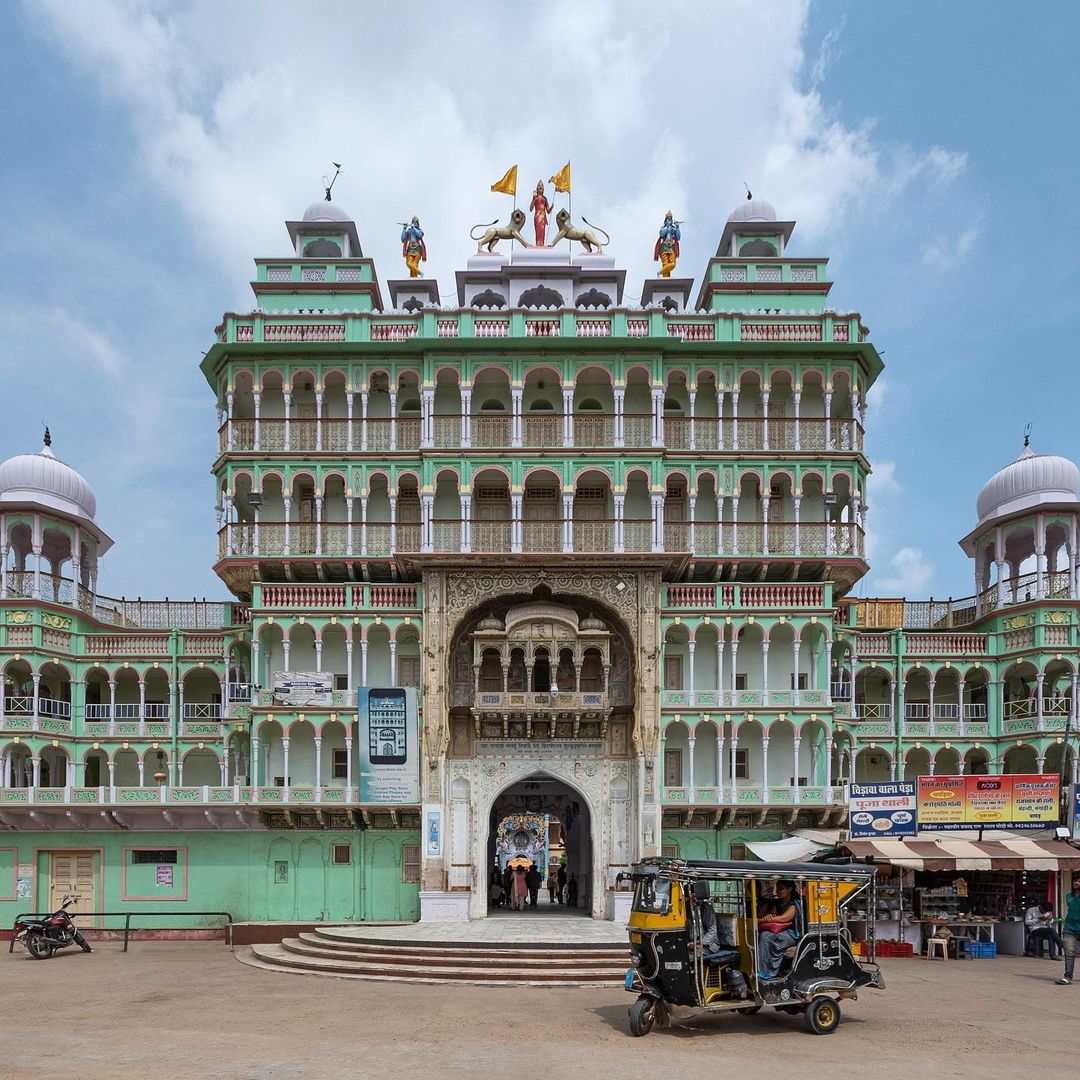The Rani Sati Temple is named for a Rajasthani woman who is believed to have lived between the 13th & 17th centuries and is commemorated for her act of sati, the practice of a widow sacrificing herself atop her deceased husband’s funeral pyre.
The accounts of Rani Sati’s life and the events leading to her death vary widely. One story dates back to the Mahabharata, one of the major Sanskrit epics of India. As the legend goes, Rani desired to be married to Abhimanyu and be sati in her next life. Granted by Lord Krishna, she was born as Narayani and Abhimanyu was born as Tandan and the two were married.
Tandan owned a beautiful horse that was desired by the son of the King of Hissar. When Tandan refused to give up his horse, the King’s son challenged him to a duel. Tandan killed the son, and in turn, the King murders Tandan in front of Narayani. In retaliation, Narayani kills the King, then orders the horse’s caretaker, Ranaji, to set her ablaze during her husband’s cremation.
As gratitude, Narayani took Ranaji’s name so that he’s worshipped alongside her. From then on, she is known as Rani Sati. While her exact lifetime is unknown, the Temple – which is the largest in India devoted to Rani Sati – is said to be around 400 years old and is known for not holding any paintings or statues of any gods. Rather a trishula, or trident, represents Rani Sati.
What was initially a voluntary act considered quite courageous and heroic, later became a forced practice with a dark past. The practice was banned multiple times and deemed punishable by the courts. Although controversial, Rani Sati is beloved in India with many temples dedicated to her worship.
 28.135754, 75.4035426
28.135754, 75.4035426



























Know more? Share with the community!
Submit Your ImageLogin/Sign Up.